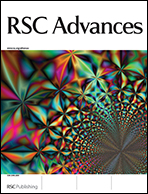Non-specific clustering of histidine tagged green fluorescent protein mediated by surface interactions: the collective effect in the protein-adsorption behaviour†
Abstract
The chemically programmed non-fouling surfaces were used to observe the surface assembly behaviour of hexahistidine tagged Green Fluorescent


 Please wait while we load your content...
Please wait while we load your content...